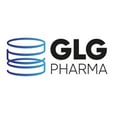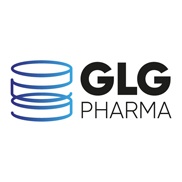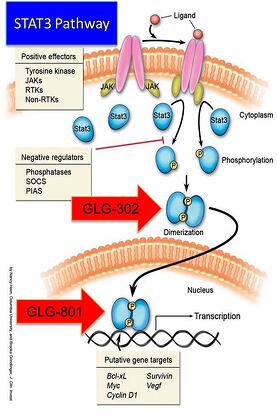
The most important difference is that GLG Pharma are not starting from scratch. We are veterans of many drug discovery, development, launch and successful drug treatment products. Many new companies that were launched and are being launched today in the Biotech and Pharma markets; were and are, started with such marketing and funding concepts as:
- Transformational (new technology that changes an application within a defined market and industry)
- Paradigm Shifting (new technology that changes an industry)
- Innovative Transformations (new applications that open new markets of established market, technology and industry)
- Ground Breaking Technologies (never before discovered technologies that opens completely new markets)
- Lots of Investment Capital (Drugs, devices and diagnostics all require large amounts of capital)
- Lots of equity dilution (founder’s equity is usually reduced to 1-5% of holdings after IPO’s, as a general rule)
GLG Pharma was started with a much simpler and understandable strategy for achieving drug and regulatory approval, a strategy that has two principles. Know your science and know your patient, coupled with shorter to market revenue generating products.
Many drug companies today have that strategy, but they are already funded. These companies are now selling products into a market and now they have become post-transactional savvy, compared to when they were first funded or seeking investment. So what has changed in the Biotech and Pharma world? In our opinion, a lot has changed.
Pharma and Biotech companies and startups have evolved as have the Pharma and Biotech markets in which we all operate. Today, investment for transformational, paradigm shifting and ground breaking technologies out of the high end institutions is still happening and will continue to do so; but the real question is; is this how a new Biotech and Pharmaceutical company should be launched? There is a reduced risk way to fund Pharma and Biotech. At GLG we have combined near term revenue opportunities in cancer with our pipeline development strategy. Our focus remains on the science and the patients, supported by investment and revenue from targeted approved products for prescription and over the counter products. These early stage revenue generators can help fuel and reduce the need for additional investment and subsequent dilution.
Each disease, whether it is AIDS, Influenza, Cancer, Schizophrenia, Alzheimer’s, Autosomal Dependent Polycystic Kidney Disease or any other terminal or chronic illness, have families and friends concerned for the patient. The patient is attended to by a cadre of physicians and clinicians who manage the disease and its treatment. It is a very complicated and sometimes a frustrating process, especially in the United States and also in Europe. It is frustrating not only for the patients and their families, but also for startup companies and entrepreneurs who want to launch new products and therapies for those patients. GLG’s focus on the science of disease and a patients therapy in treating proliferative diseases that have p-STAT3 as a mechanism, could help usher in new lower toxicity drugs that improve overall patient care. GLG can also monitor p-STAT3 levels in patients with a disease, alerting clinicians and patients as to the success or failure of a treatment regime.
Since the second great depression; starting in 2007 with the hedge fund collapse, life science technology companies; especially the Biotech and Pharma industries have been declining in value. However, the decline shortly after 9/11 in 2001; drug, biotech and diagnostic stocks and the startups have been on the proverbial slide down the slippery slope of little to no liquidity. Low liquidity for investors, low liquidity in equity markets, little to no availability of capital in bond markets. Adding to the downward spiral is the apparent unending series of regulatory disasters that have left the investment community shying away from anything remotely represented by or requiring an FDA filing and approval. Part of the regulatory perception problem was caused by large Pharma and large Biotech, by sometimes ignoring their responsibility to self-regulate their products, operations and clinical development in accordance with FDA and EMA regulations. A few very visible FDA actions against the industry can affect the entire investment and market landscape, Vioxx, Genzyme’s production failures and a whole host of other disasters, tangibly affected the investor psyche.
GLG’s management team have a performance history; out of the 16 drugs that have been developed and submitted to FDA review and approval by our collective team of professionals and the several FDA site audits of our former operations, 15 of those drugs were approved and none of us received or were cited in a FDA audit for any violations of 21CFR guidelines.
The same principle of respect for the regulatory process, applies to our respect for the patients; that our drugs will be treating. GLG are looking for a series of molecules that will be efficacious for the treatment of patients and have as little side effects as possible. All drugs have side effects that affect some or all patients, so having a chemotherapy agent that does not have side effects are rare. So why did we choose GLG-302, GLG-801, GLG-202, GLG-101 and 401 to advance into clinical development. GLG-302 is a compound that has proven itself in our pre-clinical evaluations as well as by a host of independent laboratories around the world. We have encouraged other laboratories to duplicate our findings and we have built up a successful and prominent following of researchers that now believe that inhibition of p-STAT3 is one of the keys to shutting down cancer cells that have become resistant or are proliferating at an exponential rate.
We are also looking at GLG-302 in combination with other standard chemotherapy agents as this compound has reversed chemotherapy resistant cells in vivo and in vitro, allowing a second course of treatment which eradicates the resistant tumors. This research has also led us to study cancer stem cells which survive standard chemotherapy treatments, these cancer progenitor cells go into a sort of remission and then spread throughout the body and start reproduction at a much higher rate. Cancer stem cells are resistant to chemotherapy treatments and are believed to be one of the major cause for cancer cell metastases. Cancer stem cells appear to be 100% up regulated with p-STAT3.
GLG Pharma: Drugs, Diagnostics and Devices- delivering more than a drug ©










